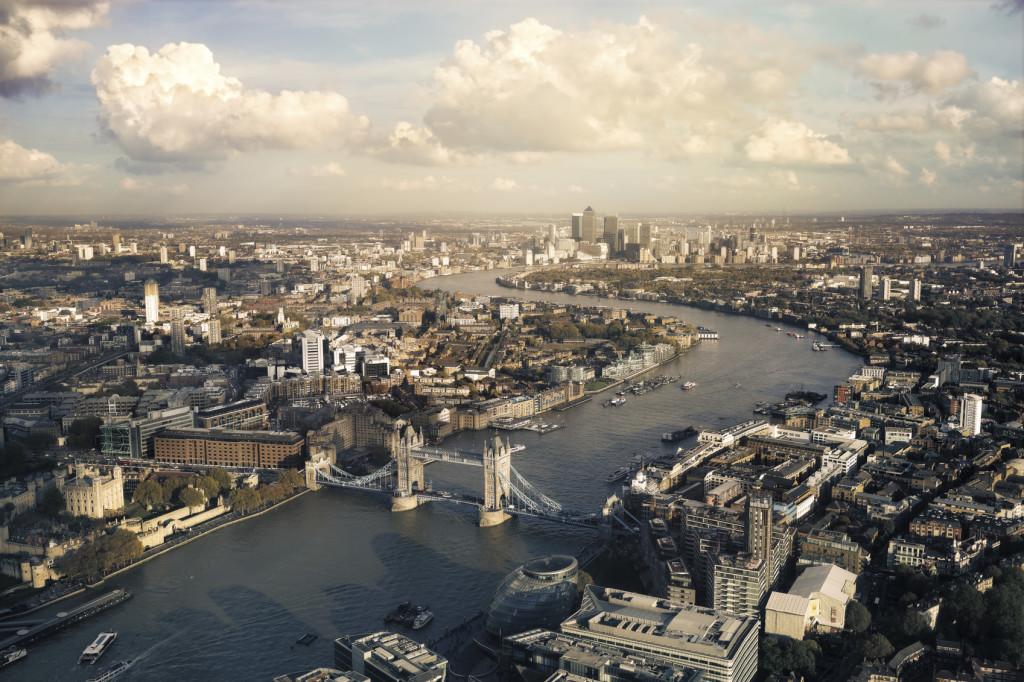UK Carriers Accused of “Padding” Flight Times to Avoid Paying Compensation

London skyline looking along the thames river towards Tower Bridge and the financial skyscrapers in Canary Wharf (Photo: iStock)
An investigation by Which? Travel finds that British-based airlines have taken to overstating scheduled flight durations in an effort to avoid paying mandated compensation for delayed arrivals. According to the report, the average published flying times between some destinations has risen by as much as 35 minutes over the past decade.
Some U.K. airlines are reporting that it takes substantially longer to fly between destinations than it did a decade ago, but an investigation from Which? Travel reveals that the airlines may be padding their published travel times in order to avoid paying regulatory mandated compensation in the event that a given flight happens to run behind schedule. Although the newly added extra grace periods were ostensibly intended to give the airlines a better on-time record, the just published exposé reveals that the scheme may have backfired.
Even though some scheduled flight times have increased by 35 minutes or more over the last ten years, many of the worst offenders actually have a much worse on-time record than they did just a decade ago. For example, the study found that today, 87 percent of British Airways flights take longer than they did in 2009, but the airline had a much worse on time rating than it did in 2009. The report found similar results at EasyJet and Virgin Atlantic as well.
“Passengers are likely to feel that schedule padding is another case of airlines pulling the wool over their eyes,” Which? Travel Editor Rory Boland told the Guardian this week. “Carriers are quick to claim that adding 10, 20 and even 30 minutes to flights will improve on-time performance. The accompanying slump in punctuality over recent years suggests it hasn’t helped much. Instead, longer scheduled flight times are likely to mean passengers spend more time sitting around at the gate or on the plane itself, just so the airline can pat itself on the back for being ‘on time’ at your destination. Conveniently, it could also reduce the number of instances when an airline has to pay you compensation for a flight delay.”
The airlines involved have largely dismissed the report, noting that air traffic control congestion and slowing aircraft in order to conserve fuel are the real culprits behind the trend toward longer flight times. A few airlines admitted, however, that the scheduled flight times might have been a bit too optimistic in past years. Airline executives across the region have also complained that the string of recent labor actions by air traffic controllers have wreaked havoc on the carriers’ on-time performance.
Airlines’ penchant for padding scheduled flight times to give the appearance of better on-time performance is nothing new. In 1990, shortly after the U.S. Department of Transportation (DOT) started mandating that U.S. airlines report on-time performance, carriers gradually altered scheduled flight times in order to give a cushion for delayed aircraft. The Government Accountability Office (GAO) investigated the trend and actually found the practice to be something of a move in the right direction, but noted that the moves did very little to improve on-time numbers.
In most cases, U.S. airlines are not required to provide compensation for minor delays. In this situation, there was a more unique reason for slowly moving away from publishing best case scenario flight duration times.
“DOT’s investigation of airline scheduling practices during 1986 and 1987 resulted in the on-time reporting requirement, at that time, DOT found that airlines often scheduled unrealistic flying times because the computerized reservation systems used by travel agents gave priority listings to flights with the shortest elapsed time,” the GAO report concluded. “In August 1987, they obtained a commitment from the computerized reservation system vendors to stop listing flights in the order of scheduled elapsed times. This eliminated an incentive for airlines to underestimate flight times.”
[Photo: iStock]























I don't see anything wrong with "padding" if it makes the schedule more reliable. I wouldn't even call that padding, just a realistic adaptation. There's a limit as to how much "padding" is possible anyway: if the scheduled time becomes comparable to talking other means of transportation... HTB.
The same thing happens with bus timetables in peak hour: the travel time will be different. If the airlines apply the padding to those flights which are regularly affected, that is being smart. On the other hand if they apply the padding across the board, it may affect their ability to make connecting flights that would usually be feasible. So it might hurt them if they are scientific about it.
Actually, this is exactly what airlines should do. Be realistic about arrival times rather than selling something you can't provide ever so often.
This seems like a non-story. I would much rather arrive early than miss my connection or ruin my plans by arriving late (especially if connecting in LHR, which can be a miserable place to make a tight transit). I fail to see the downside of this practice. You know what the expected departure and arrival times are when you book the flight, so how is this harming consumers?
Delta Airlines has been padding their times for years to have better ontime report.